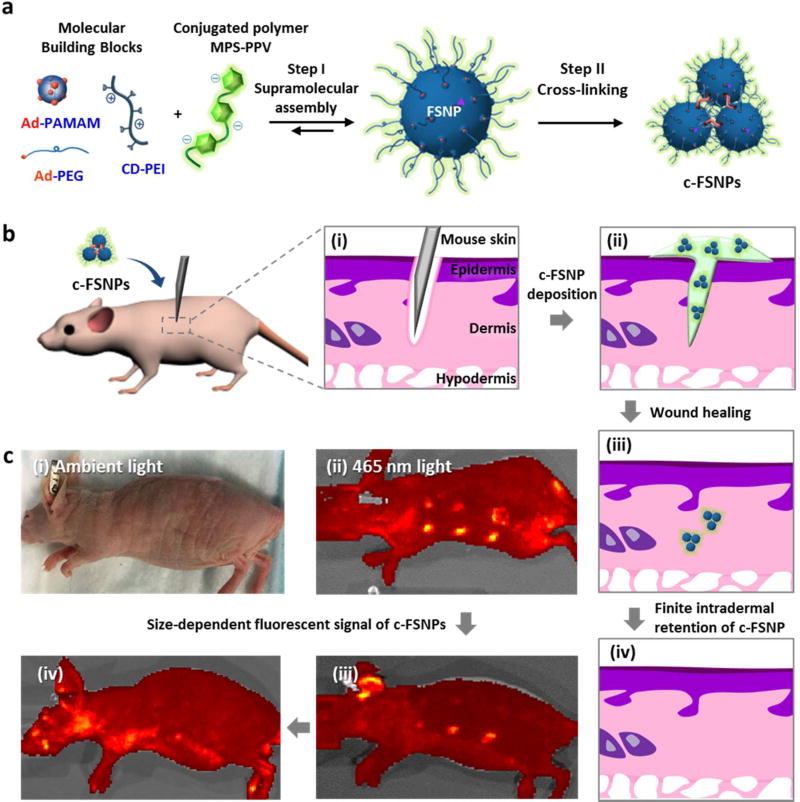Figure 1.
c-FSNPs as “finite tattoo” pigments. (a) Two-step synthetic process employed for the preparation of c-FSNPs as “finite tattoo” pigments. (i) Step I: Supramolecular assembly of MPS-PPV and three molecular building blocks (i.e., Ad-PAMAM, Ad-PEG, and CD-PEI) for the combinatorial formulation of different FSNPs. (ii) Step II: Cross-linking of FSNPs for the generation of micrometer-sized c-FSNPs. (b) Schematic illustration of the tattooing procedure by which c-FSNPs are deposited in the skin of a nu/nu mouse: (i) wound generation in the dermis layer of the mouse skin through poking with a needle, (ii) deposition of c-FSNPs, (iii) wound healing, and (iv) clearance of tattooed c-FSNPs with a finite intradermal retention time. (c) Tattooed sites cannot be visualized (i) under ambient light irradiation, and their fluorescent signals can be detected (ii) under 465 nm light irradiation. (ii–iv) These tattooed c-FSNPs exhibited size-dependent fluorescent signals with finite intradermal retention times.

